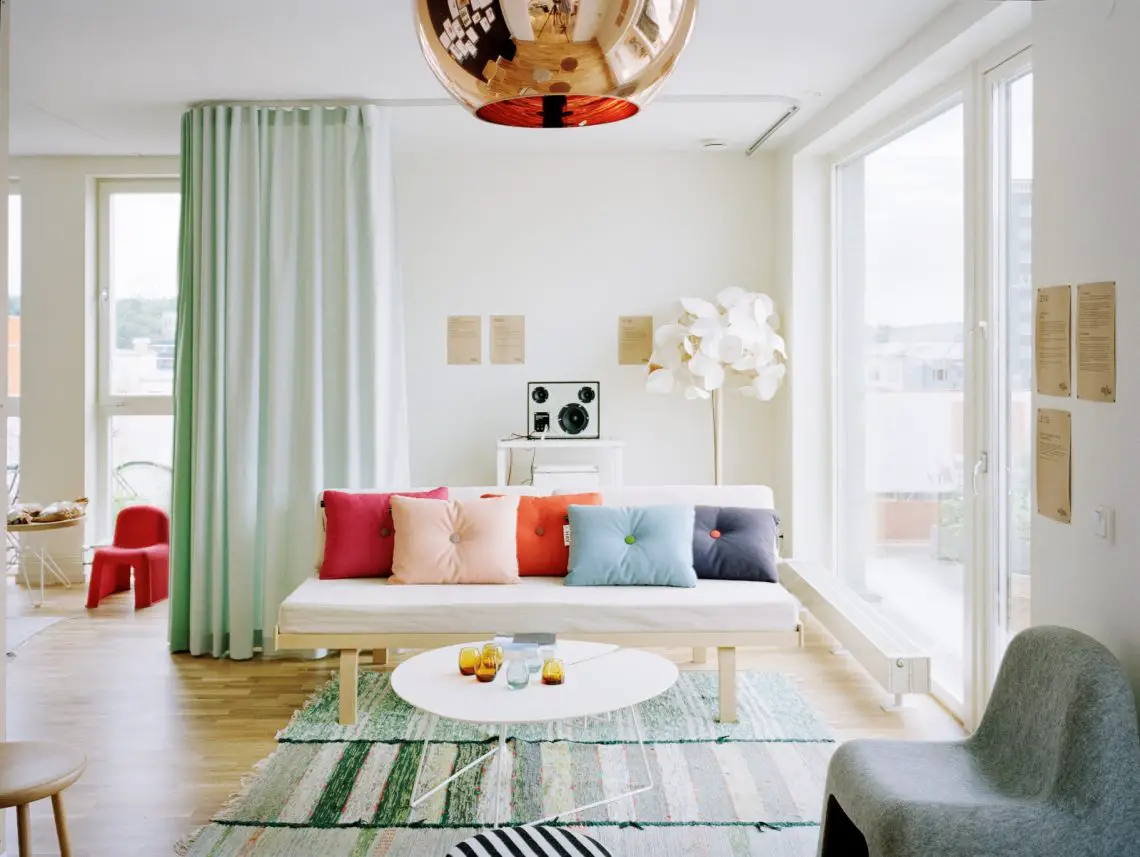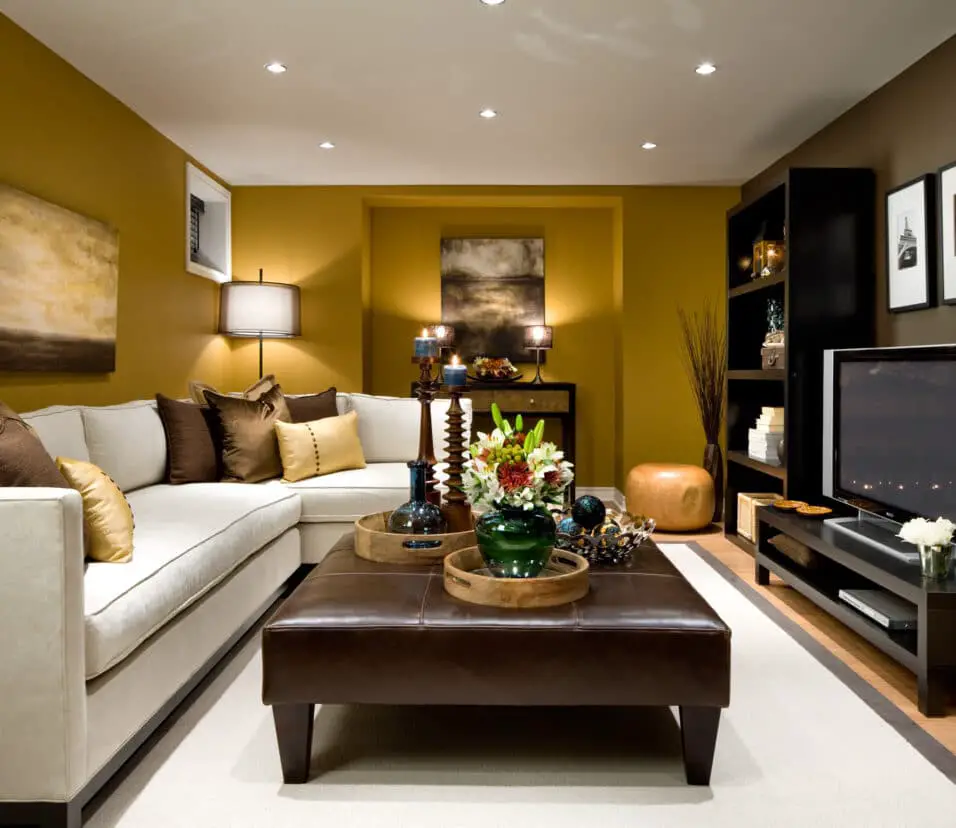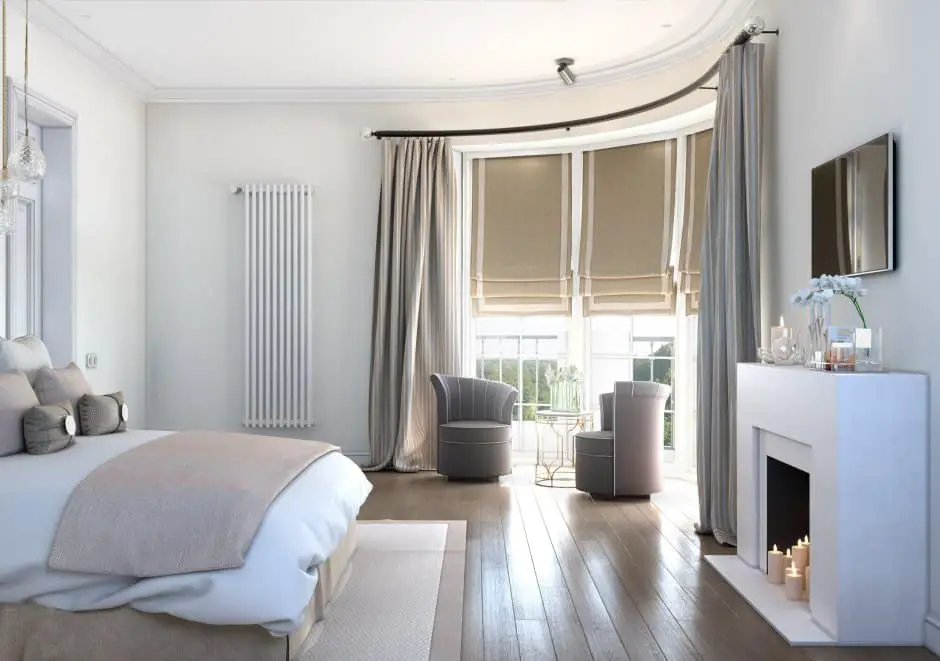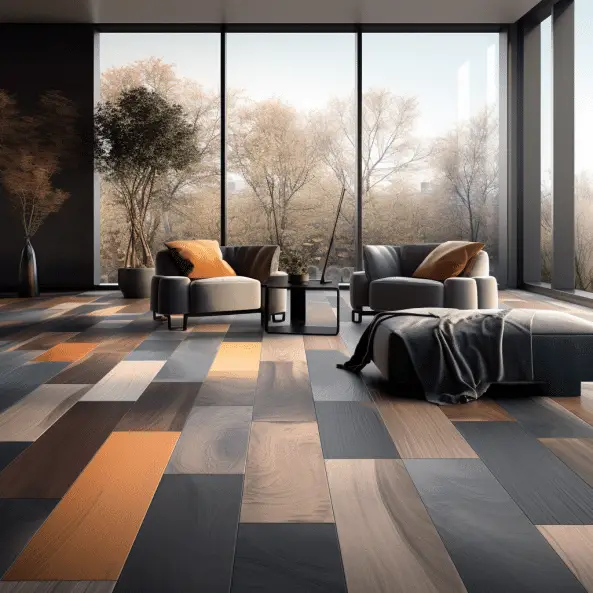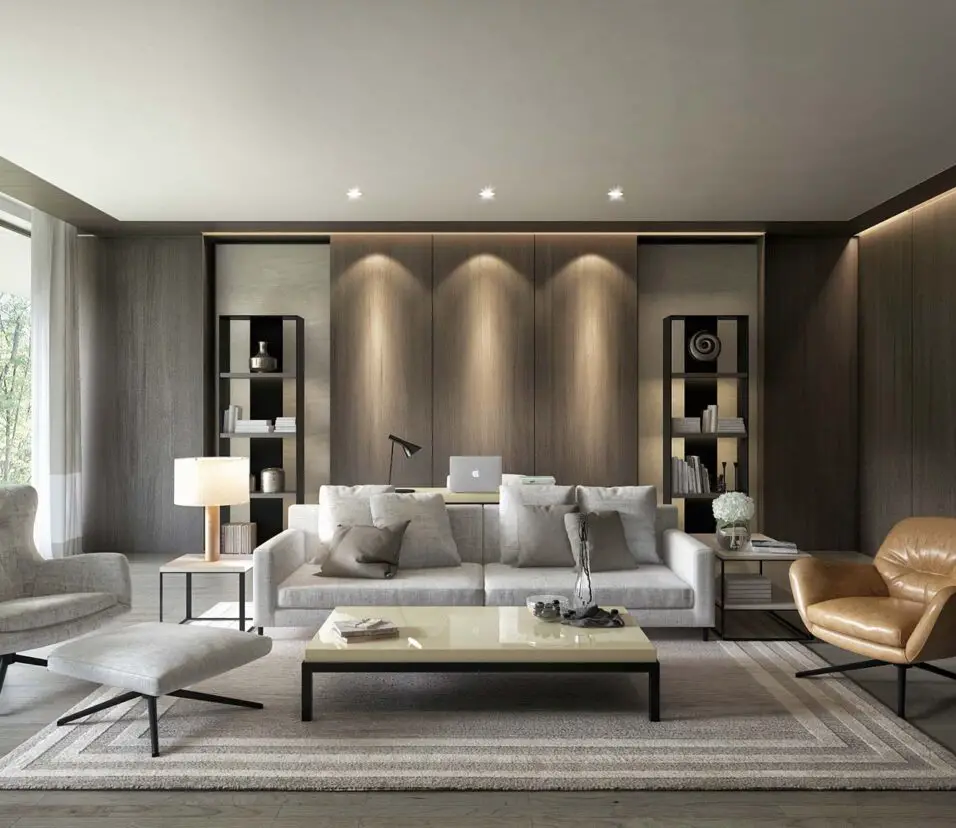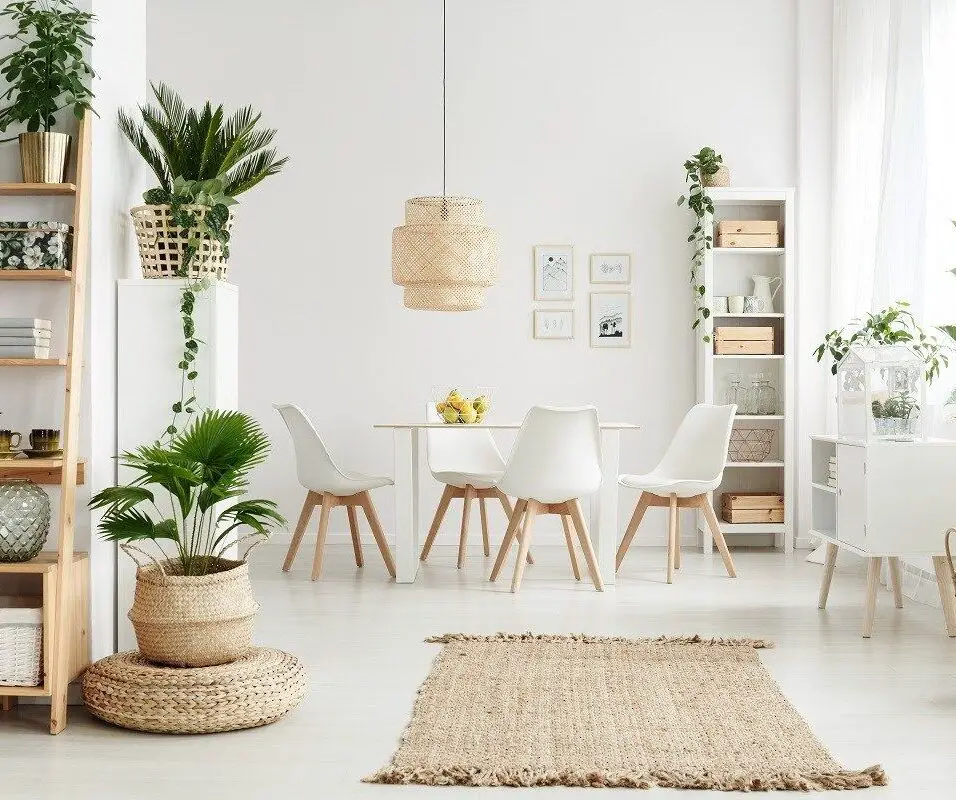What Colors Make A Small Room Look Bigger
Introduction
What Colors Make A Small Room Look Bigger: The size and layout of a room can greatly impact how it feels and functions. While we may not always have control over the physical dimensions of a space. We can use clever design techniques to create the illusion of more room. One such technique involves utilizing color to visually expand the perceived size of a small room. By carefully selecting and combining colors. It is possible to create an optical illusion that makes a confined space appear more open, airy, and spacious.
We will delve into the principles and strategies behind choosing colors that make a small room look bigger. Offering practical tips and ideas for transforming cramped quarters into visually expansive havens. Whether you’re dealing with a cozy bedroom, a compact living room. A petite office, understanding the impact of color on spatial perception can be a powerful tool in maximizing the potential of your space.
The careful selection of hues, tones, and shades can create a harmonious environment that opens up a room, making it feel larger and more inviting. By the end of this article, you will have gained valuable insights into the world of color and be equipped with the knowledge. To create visually expansive and delightful small spaces that are both functional and aesthetically pleasing.
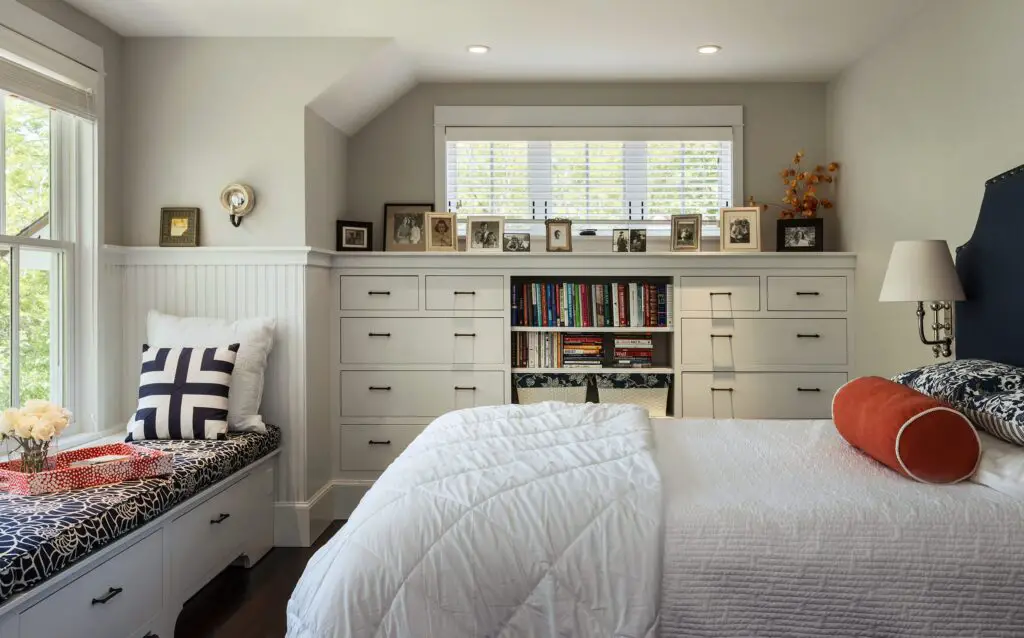
What color makes a small room appear larger?
‘Many choose to use bright white in smaller spaces assuming white will make the room appear larger, however light neutrals and soft colors used in a tonal scheme will have the same effect whilst not appearing too stark or cold,’ adds Ruth Mottershead, creative director at Little Greene.
Light and bright colors have the power to visually expand a small room. Pale pastels, soft yellows, and gentle blues can give the impression of a larger space. These colors have a refreshing and calming effect, making the room feel more open and less claustrophobic. Consider painting the walls in these light shades to create an airy backdrop for the rest of your décor.
Using a monochromatic color scheme in a small room can enhance the sense of depth and dimension. This approach involves choosing different shades of the same color and using them throughout the room. For example, using varying tones of light blue, from the walls to the furniture and accessories. Creates a cohesive look that tricks the eye into perceiving more space.
Cool colors, such as blues, greens, and purples, can create the illusion of depth and distance in a small room. These colors recede visually, making the walls appear farther away and giving the impression of a larger space. Lighter shades of these cool colors work best, as they reflect more light and contribute to the overall sense of openness.
While neutral and light colors are key to making a small room feel larger. Incorporating well-placed accent colors can add depth and visual interest. Choose a single or a few vibrant or contrasting hues to use sparingly in accessories, artwork, or small furniture pieces. These accents draw attention to specific areas and create focal points, breaking up the monotony without overwhelming the space.
How do you paint a small room and make it look bigger?
When you look at how to make a small room look bigger with paint, keep in mind that medium shades will make your space appear smaller than it is. Using dark and bright white colors that open up a room, in contrast, creates the illusion of a much larger area. Small rooms are not always square.
Light and neutral colors are the foundation for creating the illusion of space in a small room. Opt for shades of white, cream, beige, or light gray for your walls. These colors reflect light and make the room feel brighter and more expansive. Avoid dark or intense colors, as they tend to absorb light and make the space appear smaller and more confined.
Don’t neglect the ceiling when painting a small room. By painting it in a lighter shade than the walls, you create the perception of height and openness. A white or off-white ceiling will make the room feel taller and more spacious. If you prefer to add a touch of color, choose a lighter tone of the wall color to maintain a cohesive and expansive look.
A monochromatic color scheme involves using varying shades of the same color throughout the room. This technique adds depth and dimension to the space, making it feel larger. Consider painting the walls, trim, and even the furniture in different shades of a light color. This creates a seamless flow and tricks the eye into perceiving more space.
While the general rule is to paint small rooms in light and neutral colors. You can introduce a pop of color through an accent wall. Choose one wall as the focal point and paint it in a slightly bolder or contrasting color. This draws attention and adds visual interest without overwhelming the space. Ideally, select the wall that has a natural focal point, such as a fireplace or a large window.
Does painting a small room white make it look bigger?
If you have a tiny room filled with rich, saturated colors, the room will look smaller. Add a coat of white paint, and instantly, you have a room that appears bigger. There is a bit of science behind this trick: white is light-reflective, while the darker a color gets, the more light it absorbs.
White is known for its light-reflective properties. When light enters a room painted in white, it bounces off the walls, creating a bright and airy atmosphere. The reflected light helps eliminate shadows and dark corners, making the room feel more open and expansive.
White paint has a brightening effect, amplifying the natural and artificial light sources in a room. By maximizing the brightness, white paint enhances the sense of openness and can make a small room feel more cheerful and inviting.
When a small room is painted in white, the boundaries of the walls seem to fade away visually. This lack of distinct boundaries tricks the eye into perceiving the room as larger than it actually is. The seamless and continuous appearance created by white walls minimizes the sense of confinement.
White paint provides a clean and neutral backdrop, allowing other elements in the room to take center stage. By minimizing visual distractions, white walls draw attention to the furnishings, artwork, or architectural features, making the room feel more spacious and uncluttered.
What color makes a home look bigger?
Choose light colors
Making the exterior of your home a light color is the best way to make your home look larger, brighter, and more inviting. Light colors such as white, ivory, pale gray, and sage green reflect higher amounts of light than dark colors. Tricking the eye into perceiving the home as larger than it is.
Soft pastel colors can also contribute to the appearance of a larger home. Gentle blues, delicate pinks, and muted greens have a calming effect and create a light and airy ambiance. These soft hues help to visually open up rooms and make them feel more spacious. Incorporate pastel colors in areas such as walls, furniture, accessories, and soft furnishings to maintain a cohesive and expansive look throughout the home.
Using a monochromatic color scheme in your home can create a sense of depth and continuity, making it feel more expansive. This technique involves using different shades and tones of the same color family throughout the space. For example, using various shades of light blue. Gray in different rooms can create a harmonious flow and the perception of a larger, interconnected space.
These colors visually push the walls back, creating the illusion of more space. Lighter shades of cool colors work best for this purpose. They reflect more light and enhance the overall openness of the home.
While light and neutral colors are key to making a home look bigger. Incorporating well-placed accent colors can add depth and visual interest. Select a few vibrant or contrasting hues and use them sparingly as accents in furniture, artwork, or accessories. These accents draw attention to specific areas and create focal points that break up the monotony without overwhelming the space.
What makes a room look bigger?
Any room will look larger if it’s well-lit, either by natural light or artificial lighting. Get rid of heavy draperies, and open up the windows to let the light of the outdoors into the space. Add more lamps or install track lighting or recessed lighting.
Good lighting is crucial in creating a sense of space. Maximize natural light by using sheer curtains or blinds that allow light to penetrate the room. Additionally, incorporate a combination of ambient, task, and accent lighting to brighten up the space. Well-placed lighting fixtures, such as recessed lights or floor lamps, can eliminate shadows and visually expand the room.
Mirrors are excellent tools for creating the illusion of space. Placing mirrors strategically across from windows or in areas that reflect light helps to bounce light around the room. Making it feel more open and spacious. Large, full-length mirrors or mirrored wall panels can be particularly effective in maximizing the perceived size of a room.
The way furniture is arranged in a room can greatly impact its perceived size. Avoid overcrowding the space with oversized or bulky furniture. Opt for furniture that is appropriately scaled for the room and arrange it. To create clear pathways and maximize open floor space. Furniture with exposed legs or transparent materials can also contribute to a more spacious feel. They allow light to pass through and give the impression of more space.
Keeping the room clutter-free and well-organized is essential for creating a spacious look. Remove unnecessary items and streamline the decor. A clean and uncluttered space allows the eye to focus on the architecture and design elements, making the room feel larger. Consider incorporating hidden storage solutions to keep belongings out of sight and maintain a tidy appearance.
Which walls to paint to make room bigger?
Painting the wall on the far side of the room in a dark contrasting colour while keeping the side walls a light shade will help the room look more spacious. Another solution is to paint a single element such as wall shelving to catch the eye and make the rest of the space appear lighter in comparison.
Painting the end walls, also known as the shorter walls in rectangular or elongated rooms, can visually widen the space. Choose a light or neutral color for these walls to reflect light and create a sense of openness. By visually expanding the width of the room, the end walls contribute to a more balanced and spacious feel.
Emphasizing walls with windows or abundant natural light can enhance the sense of openness and connection to the outdoors. Choose a light or neutral color for these walls to maximize the reflection of natural light. Create a seamless transition between the interior and exterior. The light-filled walls create a sense of expansiveness and can make the room feel larger.
If you want to create a cohesive and visually expansive look throughout the room. Painting all the walls in a light or neutral color is a safe and effective choice. Lighter hues reflect light, make the room feel brighter, and visually expand the space. By eliminating stark contrasts or bold colors, painting all the walls in a uniform shade. Creates a seamless flow that makes the room appear larger.
While not a wall per se, the ceiling is an important surface to consider when trying to make a room look bigger. Paint the ceiling in a lighter shade than the walls to create the perception of height and openness. A white or off-white ceiling can visually lift the room and give the illusion of more vertical space.
Do warm colors make the room seem bigger?
Light and Warm Paint Colour
Whereas light and cool can make a space feel bigger, light and warm can work if you want it to feel bright and big, but still warm and inviting! Sherwin Williams Creamy is another light, bright and warm paint colours (that isn’t obnoxiously yellow).
To create a sense of spaciousness, it’s important to balance warm colors with light and neutral shades. Combining warm colors with lighter hues, such as whites, creams, or light grays, creates contrast and helps to visually expand the room. Painting walls, ceilings, and larger surfaces in light and neutral colors while incorporating warm accents can strike a balance that prevents the room from feeling cramped.
When using warm colors, opt for lighter and softer shades. Deep and intense warm colors can make a room feel more intimate and cozy but may also visually reduce the space. Lighter shades of warm colors, such as pastel oranges or soft yellows, can create a sense of warmth and still contribute to a visually expansive atmosphere.
Proper lighting is crucial when working with warm colors. Warm colors can be enhanced or subdued depending on the type and intensity of lighting. Ensure the room has ample lighting, both natural and artificial, to balance the warm colors and create a bright and airy feel. Incorporating well-placed light fixtures, such as recessed lighting or floor lamps, can help eliminate shadows and make the room appear more open.
The appropriateness of warm colors also depends on the function of the room. Warm colors can be well-suited for cozy and intimate spaces like bedrooms or reading nooks, where creating a sense of comfort and relaxation is desired. However, in rooms where a sense of spaciousness is crucial, such as small living rooms or home offices, it may be more effective to focus on light and neutral colors to enhance the perceived size of the space.
What colors make a room brighter and bigger?
What Colors Make a Room Look Bigger? “For a small space, nothing beats airy blues and crisp whites,” says Nivara Xaykao, Benjamin Moore color and design expert. “Blues recede, which can give the illusion of opening up a space,” she explains.
Another important element to consider when matching curtains is the furniture and upholstery in the room. Curtains can complement or contrast with the colors and patterns present in the furniture. For instance, if you have a bold-patterned sofa, you can choose curtains in a solid color that matches one of the hues in the pattern. Alternatively, if your furniture is neutral, you can add a pop of color with the curtains or choose curtains with a complementary pattern to create visual interest.
The flooring and rugs in the room also play a role in curtain matching. Coordinating the curtain color with the flooring or rug can create a sense of balance and cohesiveness. You can choose curtains that pick up one of the hues from the flooring or rug, or opt for a contrasting color that complements the overall color palette of the room.
Consider the overall color scheme and style of the room when matching curtains. If you have a specific color palette or design theme, such as a coastal or bohemian style, select curtains that align with that theme. This can involve choosing colors that are prominent in the color scheme or selecting patterns and textures that reflect the desired style.
The function and desired mood of the room should also influence curtain matching. For example, in a bedroom where you want to create a calm and relaxing ambiance, consider curtains in soothing colors or with blackout features for better light control. In a living room or dining area where you want to create an inviting and vibrant atmosphere, you can choose curtains in bold or contrasting colors to make a statement.
Finally, consider your personal style and preferences when matching curtains in a room. Ultimately, you should choose curtains that resonate with your own taste and create a space that you feel comfortable and happy in.
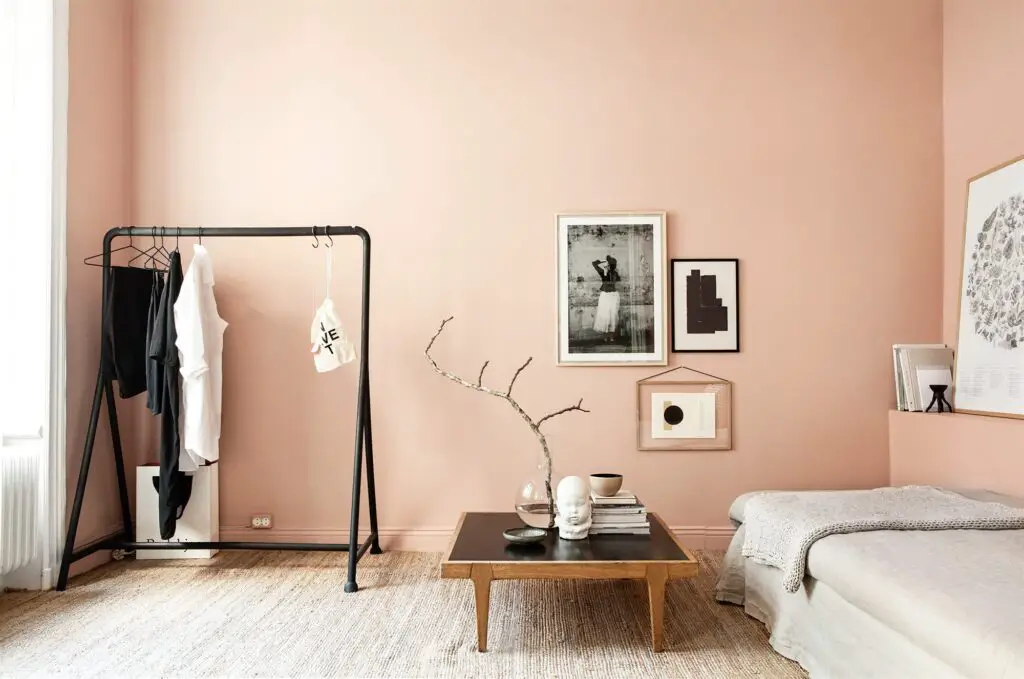
Conclusion
Neutral colors such as whites, creams, and light grays have proven to be highly effective in making small rooms appear larger. These hues reflect light and bounce it around the space, creating a sense of airiness and brightness. Additionally, monochromatic color schemes, where different shades of the same color are used, can enhance the perception of depth and dimension, adding visual interest while maintaining a cohesive and spacious feel.
Strategic use of accent colors can also contribute to the illusion of space. Incorporating pops of vibrant or small room contrasting hues through accessories, artwork, or small furniture pieces draws attention to specific areas and creates a sense of depth and perspective. However, it is crucial to use these accents sparingly to avoid overwhelming the space and detracting from the overall sense of openness.
Furthermore, the use of cool colors such as blues, greens, and purples can visually expand a small room. These colors recede, creating the perception of distance and making the walls appear farther away. Warm colors like reds, oranges, and yellows, on the other hand, tend to advance and can make a small room feel more intimate and cozy. While warm tones can be used strategically as accent colors, it is generally advisable to employ them in moderation in small spaces.



